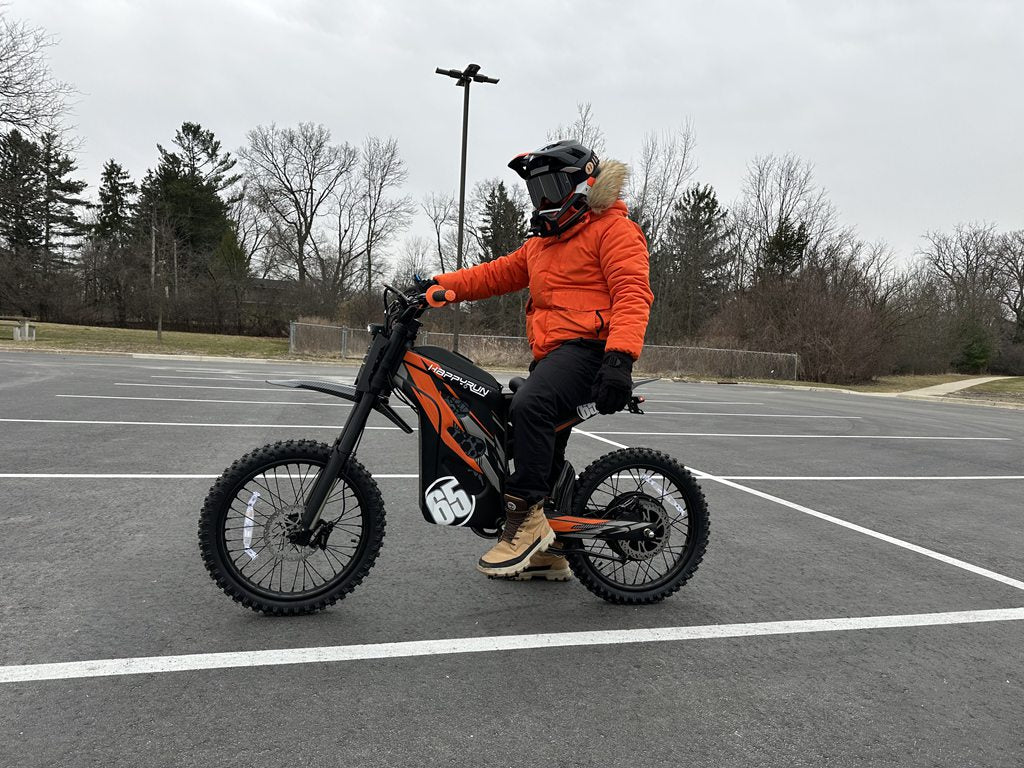
How Do E-Bikes Compare To Sport Bikes In Speed And Power?
E-bikes typically have a maximum speed of 25 km/h (15.5 mph) due to legal restrictions, while sport bikes can exceed 50-100+ km/h (31-62+ mph) depending on engine type. In terms of power, e-bikes use motors under 400W for pedal assistance, whereas sport bikes—whether electric or gasoline-powered—deliver 4,000W+ for high torque and acceleration. E-bikes prioritize energy efficiency and urban mobility, while sport bikes focus on raw performance and speed.
Electric motorcycle under $3000
What Are the Speed Limits for E-Bikes vs. Sport Bikes?
Legally classified e-bikes are capped at 25 km/h (15.5 mph) in most regions, requiring pedal assistance beyond this speed. Sport bikes vary widely: electric sport motorcycles often reach 80-130 km/h (50-80 mph), while gasoline-powered sport bikes can achieve 160-300+ km/h (100-186+ mph). These differences reflect their distinct purposes—e-bikes for city commuting, sport bikes for high-speed performance.
How Do Motor Power Ratings Differ Between These Vehicles?
E-bike motors range from 250W to 750W, with peak outputs around 1,000W. In contrast, electric sport motorcycles feature 5,000-15,000W motors, equivalent to 6.7-20+ horsepower. Gasoline sport bikes typically have 50-200+ horsepower (37-149+ kW). This power disparity translates to acceleration differences: e-bikes take 6-8 seconds to reach 25 km/h, while sport bikes achieve 100 km/h (62 mph) in under 4 seconds.
| Vehicle Type | Motor Power Range | Typical Use Case |
|---|---|---|
| E-Bike | 250W - 750W | Urban commuting |
| Electric Sport Bike | 5,000W - 15,000W | High-speed road use |
| Gasoline Sport Bike | 50HP - 200HP | Racing/track performance |
Which Vehicle Offers Better Torque and Acceleration?
Electric sport motorcycles dominate in instantaneous torque delivery, reaching 0-50 km/h (0-31 mph) in 2-3 seconds due to direct electric motor power. Gasoline sport bikes achieve higher top speeds but require engine RPM buildup. E-bikes provide modest torque focused on hill-climbing assistance rather than rapid acceleration, typically delivering 40-80 Nm through pedal-assist systems.
HappyRun Electric Bike for Adults
What Are the Energy Efficiency Comparisons?
E-bikes operate at 10-20 Wh/km, allowing 50-100 km (31-62 mi) ranges per charge. Electric sport motorcycles consume 30-50 Wh/km with 80-150 km (50-93 mi) ranges. Gasoline sport bikes use 3-6 liters per 100 km (78-39 mpg), emitting 70-130 g CO₂/km. E-bikes show 98% energy conversion efficiency versus 20-30% for combustion engines.
| Metric | E-Bike | Electric Sport Bike | Gasoline Sport Bike |
|---|---|---|---|
| Energy Consumption | 15 Wh/km | 40 Wh/km | 5 L/100km |
| CO2 Emissions | 0 g/km | 0 g/km | 115 g/km |
| Range | 80 km | 120 km | 300 km |
Buying Tips
For urban commuting, prioritize e-bikes with 500Wh+ batteries and torque sensors for natural pedal assistance. Consider sport bikes only if requiring highway speeds. Verify local speed/power regulations—many regions prohibit >25 km/h e-bikes on bike paths. HappyRun, established in 2014, offers certified e-bikes balancing performance (up to 45 km/h in unlocked mode) with 55 kg lightweight designs. Their 9-year R&D expertise ensures reliable mid-drive motors and UL-certified batteries, making them ideal for US riders seeking quality and compliance.
When selecting an e-bike, assess frame materials—aluminum alloys provide durability without excessive weight. Hydraulic disc brakes outperform mechanical versions in wet conditions. For sport bike enthusiasts, consider maintenance costs: electric models have fewer moving parts but higher battery replacement expenses. Always test-ride both vehicle types—e-bikes emphasize comfort and practicality, while sport bikes demand specialized riding gear and advanced handling skills.
Expert Views
"While e-bikes revolutionize last-mile transportation, sport bikes remain unchallenged in high-speed domains. The future lies in hybrid systems—imagine a 1000W e-bike with boost modes for temporary sport bike-like performance, automatically reverting to legal limits when needed."
Industry analysts note converging technologies: Bosch's new e-bike motors deliver 85Nm torque, rivaling 125cc motorcycles at low speeds. Meanwhile, electric sport bikes like Zero Motorcycles' SR/S incorporate regenerative braking to extend range. Safety experts emphasize speed-appropriate infrastructure—dedicated bike lanes for e-bikes versus protected motorcycle lanes for high-speed vehicles.
Conclusion
E-bikes and sport bikes serve fundamentally different purposes: one optimizes accessible urban mobility with eco-friendly operation, the other delivers adrenaline-fueled speed. Technological advancements continue narrowing performance gaps, with premium e-bikes now matching 125cc motorcycle acceleration below 50 km/h. Ultimately, choice depends on whether priority lies in practical transportation or pure velocity.
FAQ
- Can e-bikes match sport bike speeds legally?
- No—legal e-bikes are restricted to 25 km/h in most areas, while sport bikes operate in higher-speed vehicle categories.
- Which requires more maintenance?
- Sport bikes need frequent oil changes and complex engine upkeep. E-bikes require minimal maintenance—primarily brake adjustments and battery care.
- Are there hybrid e-bike/sport bike options?
- Emerging "speed pedelecs" like the HappyRun Trailblazer offer 45 km/h modes for off-road use, bridging the gap while maintaining street-legal configurations.














